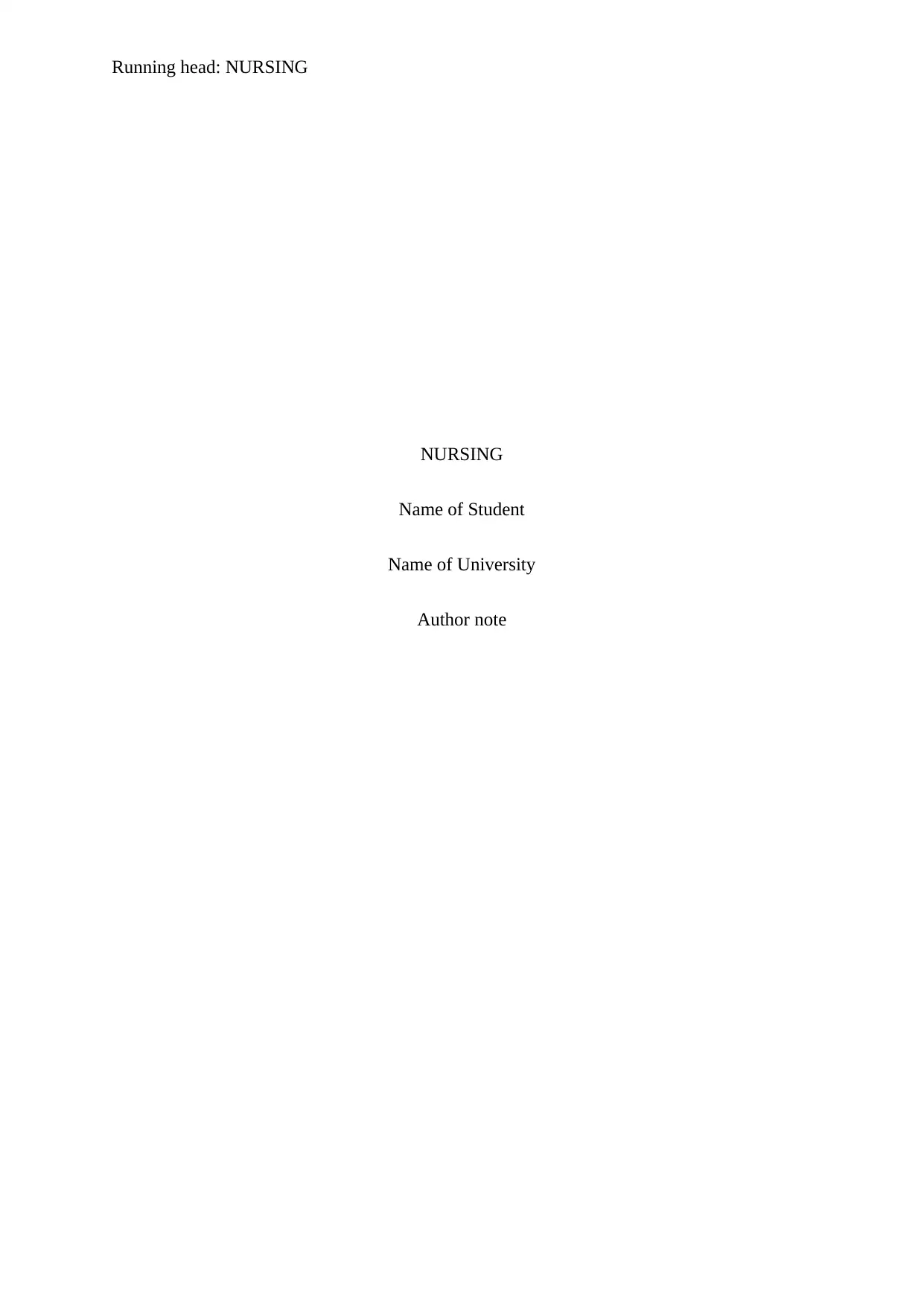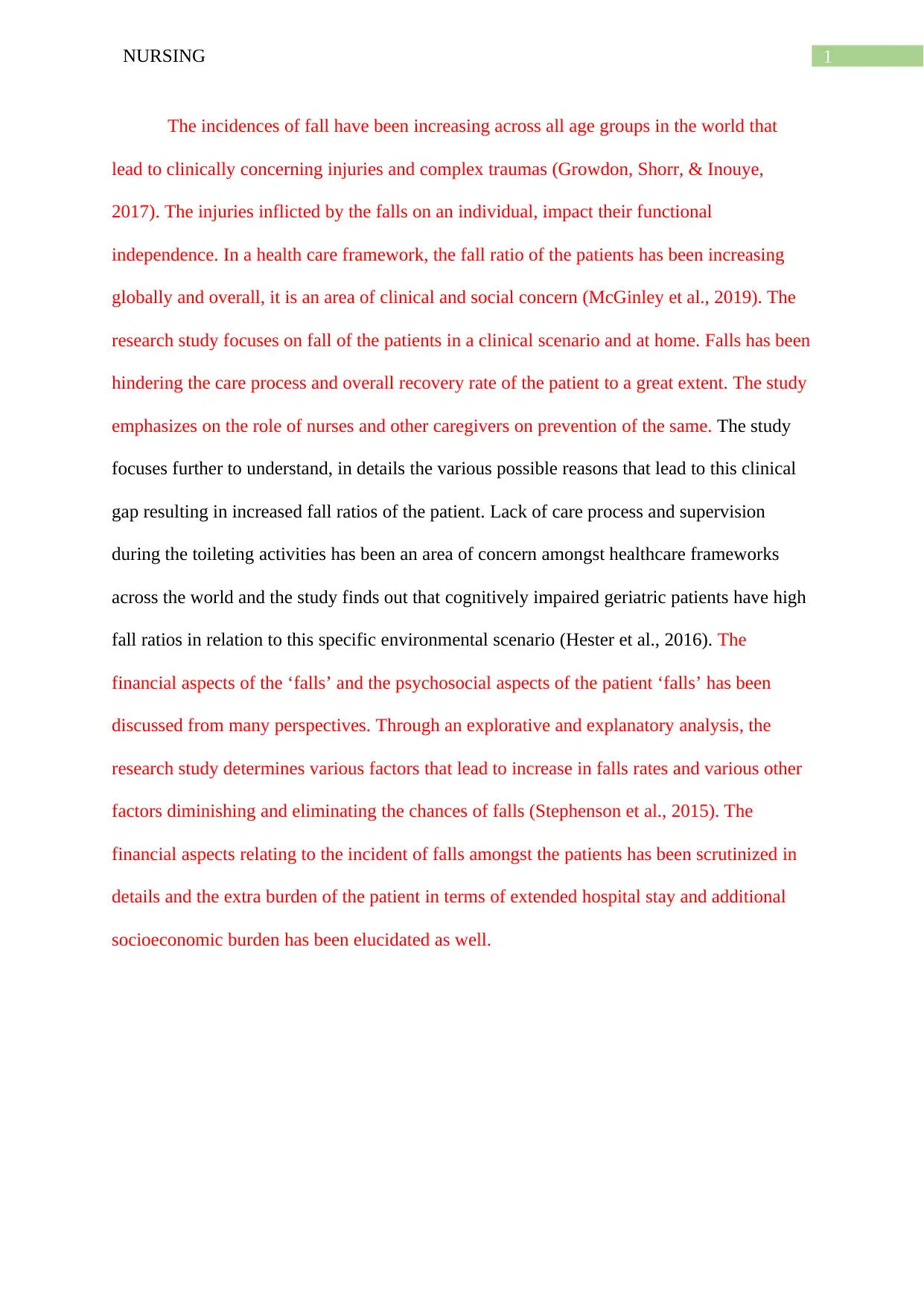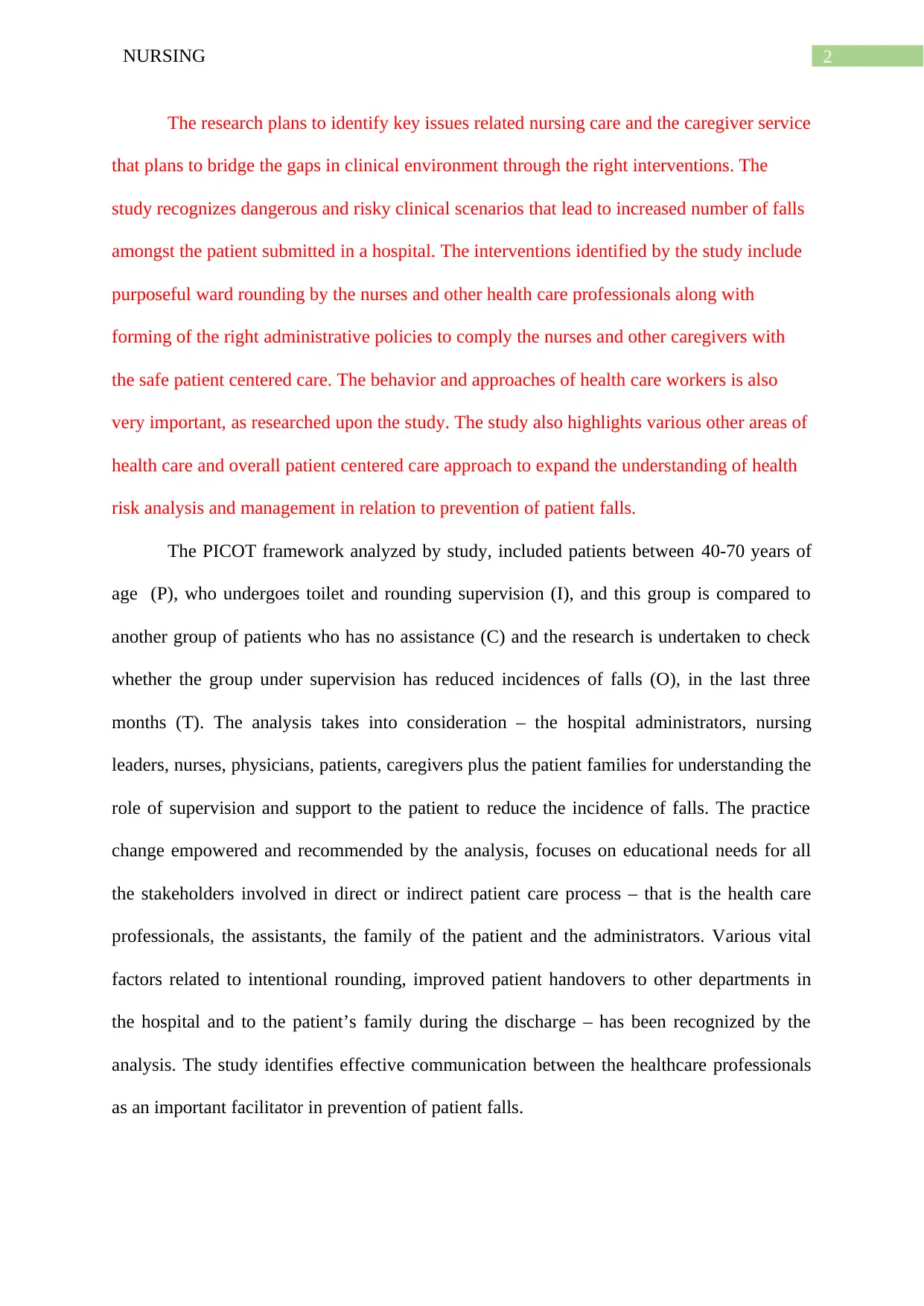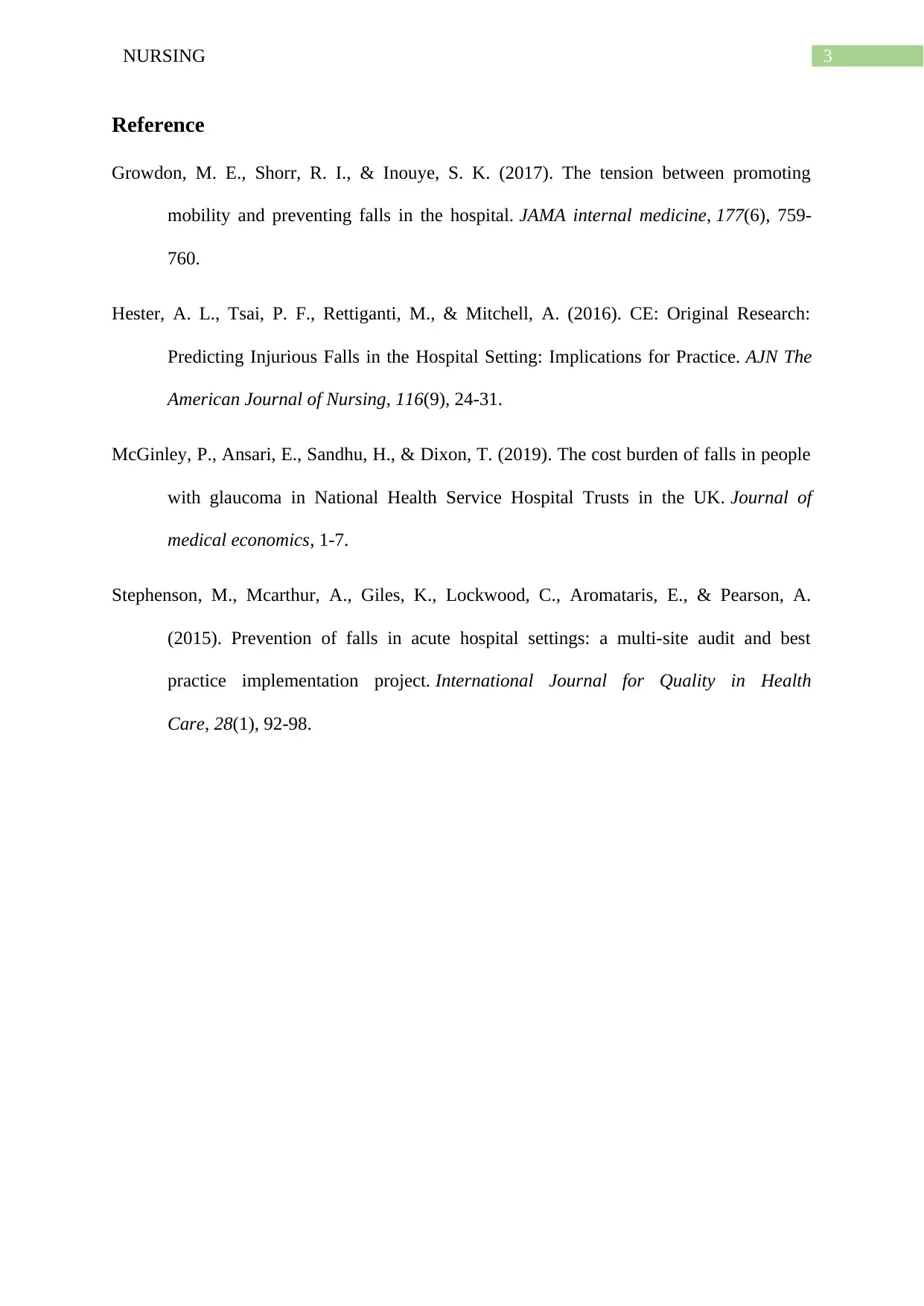Evidence-Based Strategies for Preventing Patient Falls in Healthcare
VerifiedAdded on 2022/10/02
|4
|903
|124
Report
AI Summary
This comprehensive report delves into the critical issue of patient falls within healthcare settings, examining their increasing incidence across all age groups and the significant impact on patient outcomes, functional independence, and financial burdens. The study focuses on evidence-based strategies to prevent falls, emphasizing the crucial roles of nurses, caregivers, and other healthcare professionals. It explores the effectiveness of interventions like hourly rounding and toilet supervision, particularly for cognitively impaired geriatric patients. Through an analysis of the PICOT framework, the report identifies key factors contributing to falls and proposes interventions, including the implementation of administrative policies and improved communication among healthcare teams. The report also scrutinizes the financial and psychosocial aspects of patient falls, highlighting the need for educational programs for all stakeholders involved in patient care. This analysis aims to bridge clinical gaps and promote safe, patient-centered care, ultimately reducing the incidence of falls and improving patient well-being.
1 out of 4











![[object Object]](/_next/static/media/star-bottom.7253800d.svg)